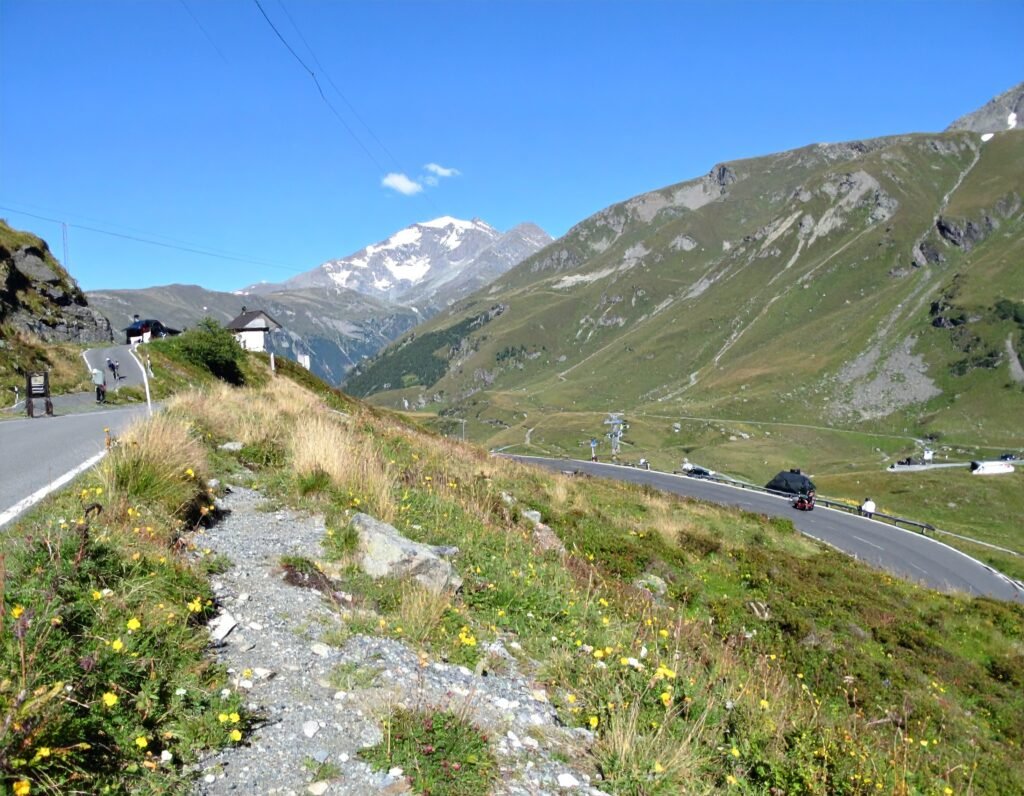Hmmm, a post about car rental in Austria…doesn’t sound much like slow travel to me? Well, despite Austria having a truly world-class public transport system, it is rather mountainous, so to reach some of those parts not served by its trains or buses, hiring a car is necessary – especially if you value having absolute freedom to explore off-the-beaten-path regions.
So here’s everything you need to know about renting a car in Austria, directly from an ex-pat who’s been driving here for almost a decade. I’ll cover which rental car company to choose, what general requirements you need to meet, what rules you must follow, and which type of car matches your specific needs. So buckle up, and take some inspiration my travel heroes – the pioneering Griswolds back in the 80’s, as we hit the holiday ro-oh-o-ah-o-ah-o-ah-o-oad…
AUSTRIA CAR RENTAL REQUIREMENTS
How old do you have to be to hire a car in Austria?
This seems to depend on which company that you hire a car from. Some say that you must be at least 21 years old to rent a car in Austria, some say 18 years old. You may also have to pay a young driver’s surcharge if you’re under 25, due to the perceived greater risk of renting cars out to newer drivers.
International driving permit in Austria: Do I need one?
This depends where you come from. First of all, you absolutely need a valid driver’s license from your home country. If you’re from outside the EU, you may also need to apply for an International Driving Permit (IDP). Check the specific requirements for your country by googling your national motoring association and asking them if you need an IDP or not. Alternatively, check out my full guide on the International Driving Permit. When driving in Austria, make sure to carry both your national license and your IDP (if required) with you at all times.
Can I rent a car in Austria with a US driver's license?
Yes, you can, but in addition to your US license, you do also need an International Driving Permit or an official translation of your US license into German. You can apply for this via the AAA at home, or with the Austrian motoring organizations, the ÖAMTC or ARBÖ – however these websites are in German only and neither are at all user friendly, so I recommend getting it done before you arrive. If you need one fast, you can get one online within minutes.

HOW TO RENT A CAR IN AUSTRIA?
Which hire car company to use?
There are plenty of options to choose from, including all the usual international suspects like Hertz, Europcar, and Avis, as well as local Austrian companies like Buchbinder and Megadrive. If you’ve got the time, do your research and compare prices & reviews to find the best hire car company.
If you value your time as much as your wallet, just use Discover Cars, as in my experience they consistently offer the best prices, the biggest range of vehicles and the best coverage. They aggregate prices from all the big hitters as well as smaller local providers, so it’s like a meta search engine for car rental companies. As such you’ll easily find a car hire place close to you. Their booking system is clean and pretty easy to navigate too, so give it a test drive below…
Can I rent a car without a credit card?
This will depend on the specific policies of whichever car hire company you decide to go with, but in most cases, paying with a credit card is the preferred form of payment. Not only are you far more likely to get a better deal when doing so, but you’ll probably have to provide a valid credit card in your name for the rental deposit anyway. You might get lucky and find a company that offers full debit card deposits and payments, but in my experience most rental car firms only accept credit cards.
What type of car is best for the Austrian roads?
- Compact or economy car – great option for Vienna/Linz/Salzburg/Graz city driving and shorter trips.
- Midsize or full-size cars – more comfortable for longer road trips and driving on highways (Vienna to Salzburg and further afield)
- SUV – for driving in the mountains in winter or on unpaved roads. They provide better handling, typically with 4WD and more ground clearance.

DRIVING RULES AND REGULATIONS IN AUSTRIA
Driving rules: In Austria, the locals drive on the right-hand side of the road, and speed limits are posted in kilometers per hour. The speed limit on motorways/highways is typically 130 km/h (80 mph), while in towns and cities it’s usually 50 km/h (30 mph). Obey these speed limits and follow all traffic laws to avoid fines and accidents.
Even very minor things, like not indicating when changing lanes or going through traffic lights on an orange are likely to be punished if spotted (I’ve been done for both of these). The cops don’t have much else to do given the relatively low crime rate in Austria, so people usually follow the driving rules strictly!
Tolls: Many of Austria’s highways, including the major Autobahns, require a toll to be paid. You can pay the toll at designated toll stations or purchase a vignette, which is a sticker that allows you to use the toll roads for a specified period of time. Check with your rental car company though, as many of them will offer rental with all domestic tolls included. If not, the vignette is available at automobile clubs (e.g. ÖAMTC, ARBÖ), in post offices, in tobacco shops, at some gas stations & online. If your rental car doesn’t have a vignette, you’ll be fined.
Driving & alcohol: Driving with anything more than 0.5mg per millilitre blood alcohol level, or under the influence of drugs, is prohibited and severely punished. For reference, the blood alcohol limit in the US and most of the UK is 0.8, so keep in mind that 0.5 is quite a bit less than what you may be used to.
If you have an accident: If an accident happens where somebody was injured then it must be reported to the police immediately. Accidents with purely material damage should be reported only if the identity of the other vehicle owner is unknown.
OTHER THINGS TO KNOW BEFORE RENTING A CAR IN AUSTRIA
Insurance policies: Make sure you understand the insurance options available and what they cover. Basic insurance is usually included in the rental price, but you can opt for additional coverage for extra protection. Consider purchasing a collision damage waiver to protect yourself from any damages to the rental car.
Fuel policy: Check the fuel policy of the rental company. Some companies require you to return the car with a full tank of gas, while others may charge you for the fuel used during the rental period. It’s almost always cheaper to fill the tank yourself and bring the car back with the same amount of petrol/gas that it had at the beginning of the rental period.
Car condition: When you pick up your rental car, make sure to inspect it thoroughly for any damage and if there’s any damage report it to the rental company before driving away. It’s also a good idea to take photos of the car from all angles as proof of any existing damage. This will help you avoid any disputes when you return the car.

Ideas for Austrian road trips
Hmmm, so many options for beautiful road trips, but if you’re looking for a high alpine pass then it probably should be the Grossglockner High Alpine Road, which first opened back in 1935. It’s a scenic 48km drive, that winds its way through the Alps between Salzbergerland and Carinthia, offering sweet views of mountains and glaciers, including Austria’s highest mountain, the Grossglockner.
Note that the road is only open in the warmer months from May to October, because its highest point reaches an altitude of 2,504m! The hiking trails nearby are spectacular, and besides the many waterfalls to check out, if you’re very lucky, you may even get a look at the rare Alpine Ibex.
RENTING A CAR IN AUSTRIA: OUTRO
Renting a car in Austria is actually pretty straight forward, so if you’ve got itchy feet and wanna hit the road, then, as a rather famous sports apparel company likes to say, just do it! With a little planning, you’ll be able to really get off-the-beaten-track to experience some of Austria’s lesser known and harder to reach spots.
If you will be heading the Austrian capital, and you’re looking for some inspiration on where to stay in Vienna, then check out my guide on the best independent Viennese hotels, and if you’re coming in winter, also my guide on what to do in Vienna when the temperature drops.
Drive safely, chaps, and do remember that they drive on the right here in Austria!





Just stumbled upon your page by searching for something completely different.
Regarding road regulations:
https://www.oesterreich.gv.at/en/themen/mobilitaet/kfz/10.html
PS: .gv.at is the same as .gov in the US.